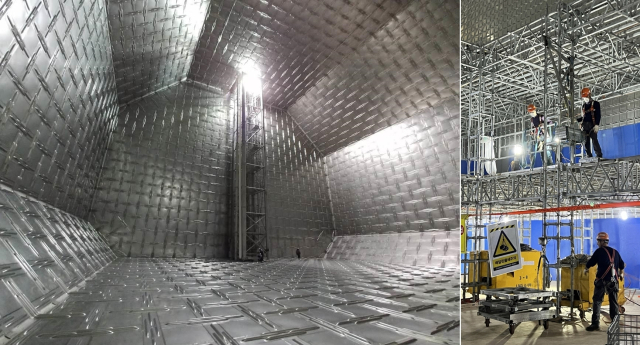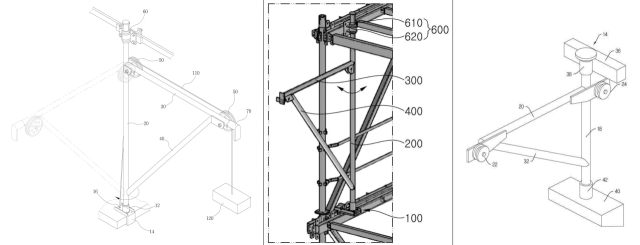“With over 90% similarity, this is clearly patent infringement.Minor changes in technical details do not justify the absence of infringement.”
According to the Daily Busan, a small shipbuilding equipment manufacturer, Company A, located in Geoje, Gyeongsangnam-do, South Korea, is engaged in a difficult and heated patent dispute with the three giants of the South Korean shipbuilding industry – HD Hyundai Heavy Industries, Samsung Heavy Industries and Hanwha Ocean. It will be interesting to see whether Company A can eventually turn the tables in this patent dispute with the industry giants.

Company A, a supplier of scaffolding equipments to shipyards. A company filed two scaffolding patent applications, “No. 10-0948447” and “No. 10-0929311”, in 2007. Among them, Patent No. 10-0929311 is a safety device necessary for removing a steel deck (truss) installed inside a storage tank, which is the core equipment of a liquefied natural gas (LNG) carrier.
The technical originality of Patent No. 10-0929311 is that a lifting wire (steel wire) is installed in the hole of the “hanger device” to prevent the weight from tilting to one side when moving, and this innovation has been certified. Based on the technical originality of the “hanger device”, Company A and Geoje Shipyard B have had an internal partnership for 17 years, but due to the cumulative loss of Company A in 2023, the two sides finally terminated the contract.
The patent dispute between Company A and Shipyard B arose after the termination of the contract, when Company A discovered that Shipyard B was still using its patented “hanger system”. When Company A objected, Shipyard B argued that they were two different types of technical equipments, by citing the different locations of the lifting lines of the “hanger device”(inside the holes of Company A while outside the holes of Shipyard B).
In November 2023, Company A applied to the Busan District Court for a preliminary injunction requiring Shipyard B to stop using the “hanger device”. Also, two other large shipyards using similar devices were sued for damages. Subsequently, Shipyard B filed an application for “passive confirmation of scope of rights” with the Korean Intellectual Property Office (KIPO), which is an examination procedure to determine that the technology currently in use does not fall within the scope of the existing patent. After a five-month hearing, it was determined that the technology was not covered by the Patent No. 10-0929311. The Busan District Court accepted the claim of Shipyard B and ruled that it had not infringed Company A’s patent.
Based on this result, Company A filed a lawsuit in the Patent Court seeking to set aside the trial judgment, claiming that the judgment favors large corporations.
A company official said, “The ‘hanger device’ used by shipyard B only makes minor changes to the company’s core technology. A company planned to seek a ruling from the Supreme Court after receiving the results from the Patent Court, and will also file a complaint with the Korea Fair Trade Commission (KFTC).”
In response, Shipyard B countered, “Company A was granted a patent by adding elements that were found to be innovative compared to the prior art, and we obtained the patent by applying new technologies that were considered advanced compared to existing technologies in accordance with legal procedures.”

South Korean media reported that with the increasing number of industrial property disputes between large enterprises and small and medium-sized enterprises, there is an urgent need to establish a system to protect vulnerable groups. According to a Korean survey, the technology protection capability of small and medium-sized enterprises, including start-ups, was 49.3 points, half of that of large enterprises (87 points).
Because small and medium-sized enterprises may not be able to bear the cost and time of avoiding disputes or may suffer significant losses in the event of a dispute, 15.8 % of them do not take any measures in the event of a technology leakage.
According to industry insiders, “Legal battles with large enterprises are not only ‘fighting with stones’ but also time-consuming and costly. Even if win a case at the patent office or the KFTC, small and medium-sized enterprises will often lose in court to a large enterprise with a large team of attorneys, or will be deadlocked in court. Therefore, there is a need for more practical and tailored support based on the level of each company. This should be complemented by active mediation by local governments and administrative agencies to resolve conflicts in an amicable manner, not just legal disputes.”


